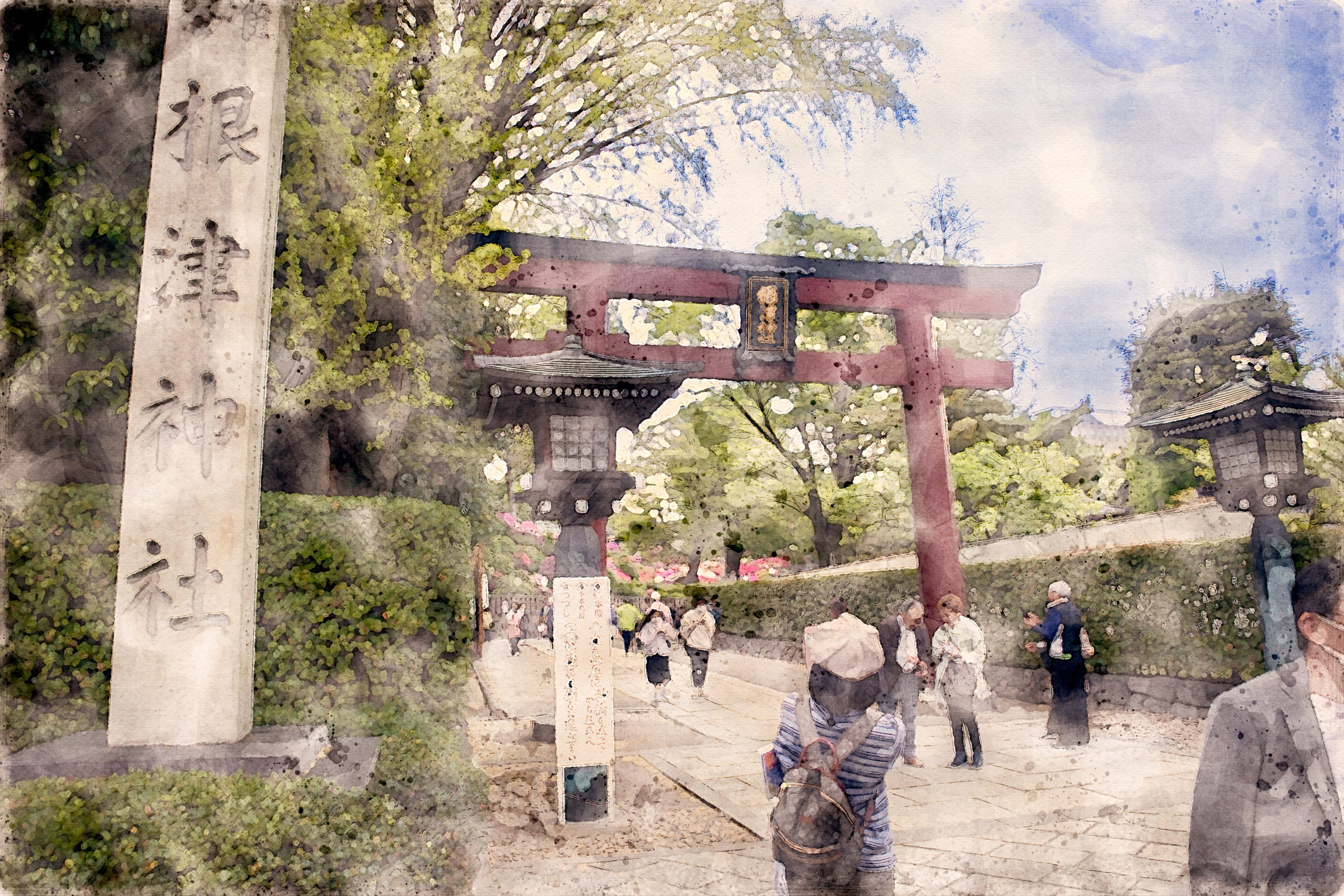The “Tokyo Shitamachi Tours” category of the Tokyo Shitamachi Guide recommends places to visit for sightseeing in Tokyo’s Shitamachi area (the area along and east of the Sumida River). We select a different theme each time and propose a model course of casual self-guided tours.
If you plan to visit Tokyo, our Tokyo Shitamachi Tours are exactly what you need. You can get inspired about where to go in the Shitamachi area of Tokyo.
Our theme this time is the Yanesen area. The Yanesen area refers to three areas in the western part of Taito Ward, which are Yanaka, Nezu, and Sendagi. Like Kuramae, which is located in the eastern part of Taito Ward, Yanesen is a very popular tourist destination, especially among young people.
Getting to the Yanesen area from Asakusa or Ueno is not so easy. The closest stations to this area are Nezu Station and Sendagi Station on the Chiyoda Line; you can’t get there directly from Asakusa or Ueno. Here, we recommend that you try Megurin Bus.
Megurin Bus is a community bus service operated by Taito Ward. As Megurin Bus consists of several routes, you can visit almost anywhere in Taito Ward using them.
Megurin East-West Route is the best option to visit the Yanesen area. This is because this route covers Asakusa, Ueno, and the Yanesen area.
This blog post gives an example of how to visit the Yanesen area by Megurin Bus. Please use it as a reference when you visit Tokyo’s Shitamachi area for sightseeing. By the way, the estimated time for the tour is about three hours.
This blog post is also available in Japanese. You can refer to it at the following link:
Tour Overview
On this Tokyo Shitamachi Tour, we will visit Nezu Shrine in the Yanesen area. We also enjoy shopping and dining while strolling through the streets of the Yanesen area. And the departure point and return point are Asakusa.
The reason why we chose Nezu Shrine is because this Shinto shrine was having the Bunkyo Azalea Festival in April. Also, we chose Asakusa as the departure point simply because it’s where we actually live.
Recommended For
This self-guided tour is ideal if you are any of the following:
- I want to walk around Tokyo’s Shitamachi area other than Asakusa.
- I want to fully enjoy major tourist spots in Taito Ward in a day (ex., Asakusa in the morning, Yanesen in the afternoon, and Ueno in the evening).
- I want to enjoy a trip with the local bus.
- My schedule is not that tight.
- etc.
Duration
- Duration: Appoximately 3 hours
Departure & Return
- Departure point: Asakusa Station on the Tobu Isesaki Line (the Tobu Skytree Line)
- Return point: Asakusa Station on the Tobu Isesaki Line (the Tobu Skytree Line)
Tips
Megurin East-West Route stops near the train stations below:
- Asakusa Station on the Tobu Isesaki Line (the Tobu Skytree Line)
- Ueno Station (Iriya Exit) on the JR Line
- Ueno Station (Yamashita Exit) on the JR Line
- Sendagi Station on the Chiyoda Line
- Nezu Station on the Chiyoda Line
- Ueno Station on the Keisei Line
You can change the departure point or the return point as you like. Here are some examples:
- If you choose Ueno Station (Yamashita Exit) on the JR Line as your departure point, you can shorten the time on the bus by 30 minutes.
- If you choose Ueno Station on the Keisei Line as your return point, you can enjoy shopping or dining at Ameyoko, the famous market street.
Itinerary
- Asakusa Station on the Tobu Isesaki Line (the Tobu Skytree Line)
- Sendagi Station on the Chiyoda Line
- Yaegaki Senbei (a handmade rice cracker shop)
- Nezu Kintaro-Ame (a handmade candy shop)
- Nezu Shrine
- Pasa (a Nepalese cuisine restaurant)
- Asakusa Station on the Tobu Isesaki Line (the Tobu Skytree Line)
Restrooms
- Asakusa Station
- The Azuma-Bashi Bridge
- Nezu Shrine
- etc.
Tour Details
Basic Information
What is Megurin Bus?
Megurin Bus is a community bus operated by Taito Ward of Tokyo. We recommend you try the Megurin Bus when you visit Taito Ward. That’s because the Megurin Bus will take you to almost any place in the ward for a less expensive fare.
The Megurin Bus has these main features:
- It costs 100 yen to ride, but you can buy a day pass for 300 yen.
- It runs all year long.
- It comes every 15 to 20 minutes, depending on which route it’s taking.
- You should get on the bus through the front door and get off through the back door.
- You pay your fare when you get on the bus.
As of April 2023, the Megurin Bus has the following six routes:
- Megurin South Route
- Megurin North Route (via Asakusa)
- Megurin North Route (via Negishi)
- Megurin East-West Route (via Ueno Park)
- Megurin East-West Route (via Uguisudani Station)
- Megurin North-South Route
If you want to visit the Yanesen area, take any of the Megurin East-West Routes.
For more details about Megurin Bus, please refer to the blog post below:
What are Megurin East-West Routes?
The Megurin East-West Route runs between the eastern and western ends of Taito Ward. In particular, there are two of them: the Megurin East-West Route (via Ueno Park) and the Megurin East-West Route (via Uguisudani Station).
After departing the Taito City Office, the Megurin East-West Route (via Ueno Park) runs through Ueno Park, Yanaka, and Sendagi. Then it returns to the Taito City Office. After that, it goes clockwise around the east of Taito Ward and comes back to the Taito Ward Office.
The Megurin East-West Route (via Uguisudani Station) also starts from the Taito City Office. Then it runs through Iriya, Yanaka, Sendagi, and Nezu. Then it returns to the Taito City Office. After that, it goes clockwise around the east of Taito Ward and comes back to the Taito Ward Office.
For more details about the Megurin East-West Routes, please refer to the blog posts below:
About Nezu Shrine
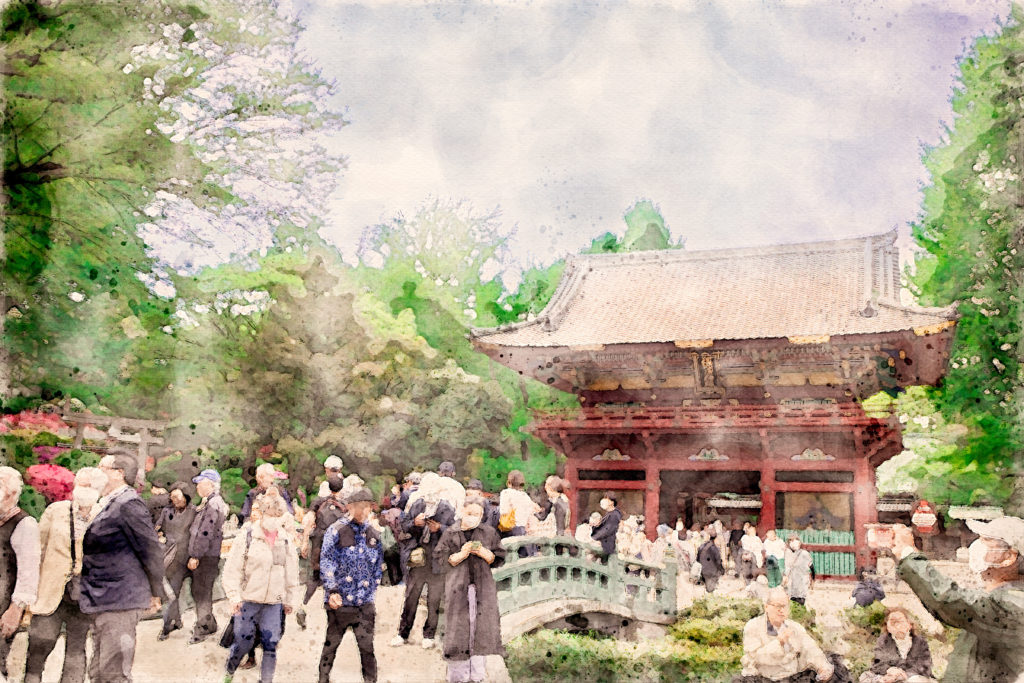
Nezu Shrine is an old Shinto shrine in Nezu, Bunkyo Ward. Nezu Shrine claims that Yamato Takeru built this shrine about 1900 years ago.
Yamato Takeru was a member of the royal family who lived from the end of the 1st century to the beginning of the 2nd century. There are many Shinto shrines deeply associated with him in Japan.
The main enshrined Shinto deities of Nezu Shrine are as follows:
- Susanoo no Mikoto: God of War and Agriculture
- Oyamakui no Mikoto: God of Mountains
- Hondawae no Mikoto: God of War
Nezu Shrine is famous for its azalea garden. More than 3,000 azaleas are planted in this garden, and you can enjoy the beautiful flowers every April.
Route Details
Asakusa Station Stop on Megurin East-West Route (Stop #32)
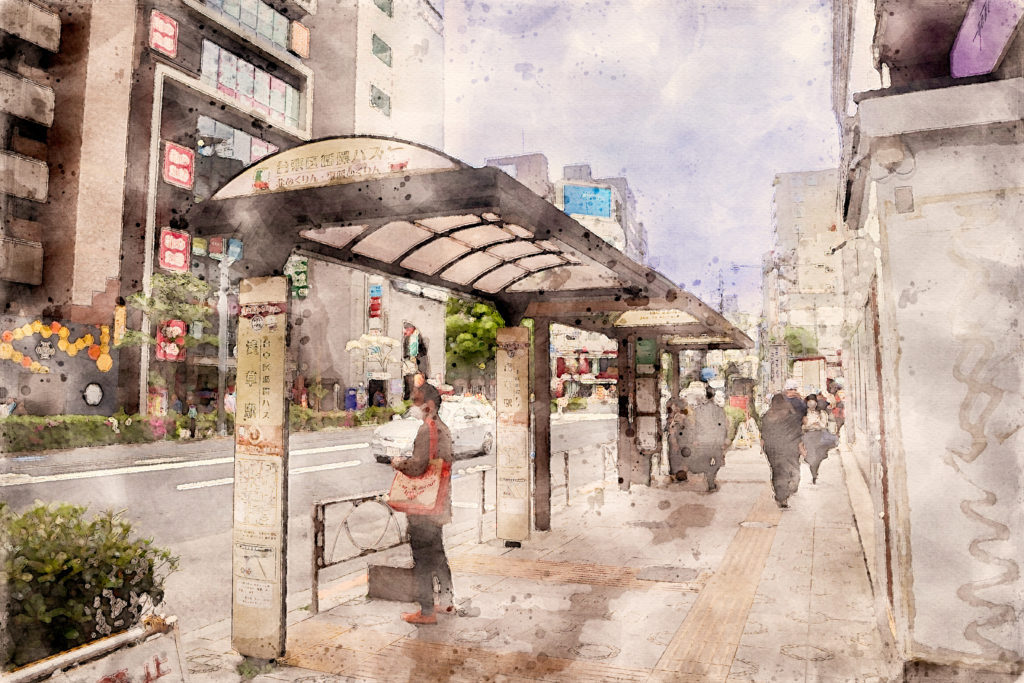
Our Tokyo Shitamachi Tour starts at the Asakusa Station Stop on the Megurin East-West Route. You can find this bus stop just outside Asakusa Station’s Central Exit. The station is on the Tobu Isesaki Line, also known as the Tobu Skytree Line.
We will take the Megurin Bus from here to the Sendagi Station Stop (Stop #14). The ride should take about an hour. Let’s enjoy the view of Tokyo’s Shitamachi from the bus window while we travel there.
As mentioned earlier, the Megurin East-West Route has two sub-routes: one goes via Ueno Park, and the other goes via Uguisudani Station. These two routes alternate, so you can take either one depending on your preference.
Please note that the Megurin North Route (via Asakusa) also stops at this bus stop. However, this particular bus does not go to Sendagi Station, so please keep that in mind.
You can easily distinguish the Megurin East-West Route from the Megurin North Route by looking at their body colors. The Megurin East-West Route is painted in a combination of beige and wine red, while the Megurin North Route is painted in red and green.
Sendagi Station Stop on the Megurin East-West Route (Stop #14)

You need to get off the bus at the Sendagi Station Stop (Stop #14) on the Megurin East-West Route, The bus stop is located on Shinobazu-Dori Avenue.
Once you have gotten off the bus, you should walk towards the south along Shinobazu-Dori Avenue, following the direction of the bus. Our next destination, Yaegaki Senbei, is on the opposite side of the avenue. You need to cross the avenue at a pedestrian crossing to reach it.
Yaegaki Senbei
Yaegaki Senbei is located just a 5-minute walk from the Sendagi Station Stop on the Megurin East-West Route. This long-established store has been selling rice crackers for over 90 years.
Personally, I always make a point to stop by Yaegaki Senbei when I visit Nezu Shrine. On this occasion, I picked up some Nure-Senbei and Genkotsu-Senbei, both of which were delicious.
When you shop at Yaegaki Senbei, your rice crackers will come in a paper bag featuring the portrait of TATEKAWA Danshi, a famous Rakugo storyteller who once lived on the upper floor of the store.
Nezu Kintaro-Ame
After walking for about 1 minute from Yaegaki Senbei, you will reach the Nezu-Jinja-Iriguchi intersection (根津神社入口 交差点). Take a right turn at this intersection, and you will find Nezu Kintaro-Ame.
Nezu Kintaro-Ame is an old-fashioned candy specialty shop that sells handmade candies. The shop is famous for its Kinako (roasted soybean flour) candy, but unfortunately, it was sold out on the day of your visit.
Nezu Kintaro-Ame is a branch of Kintaro-Ame Honten located in Minowa, Taito Ward. The store was originally opened in Koishikawa in 1941 and moved to its current location in 1998.
Nezu Shrine
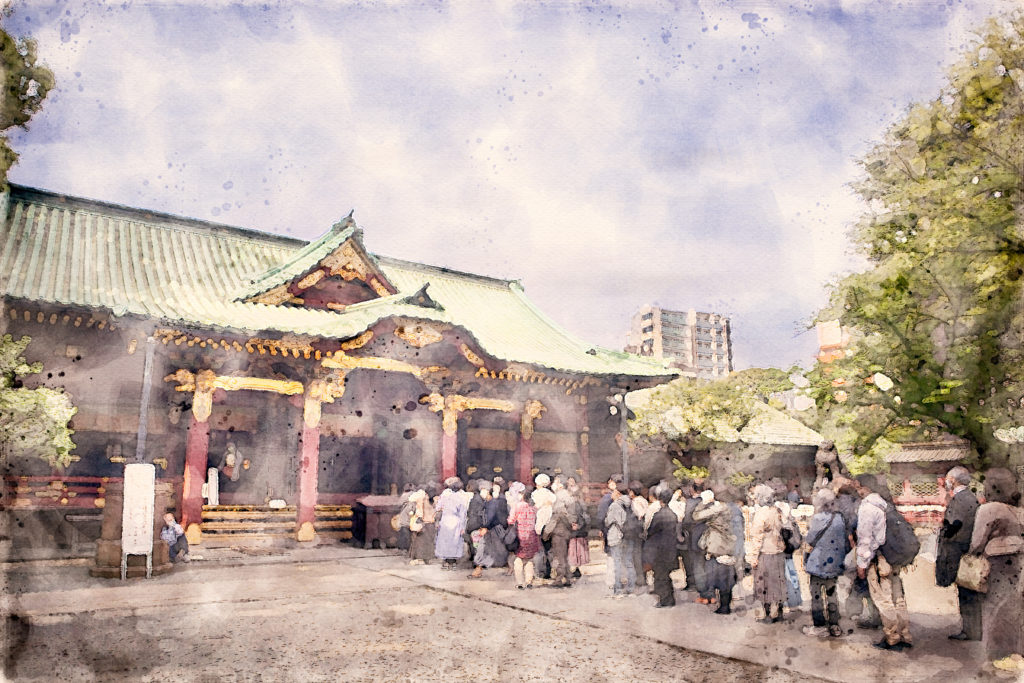
Nezu Shrine is just a minute away from Nezu Kintaro-Ame. The alley leading to the shrine is lined with old-fashioned houses, allowing visitors to experience the atmosphere of Tokyo’s Shitamachi area.
On the day of our visit, the Bunkyo Azalea Festival was taking place at Nezu Shrine. Despite being a weekday, the shrine was filled with many visitors, and we had to wait in line for over five minutes to make our wishes.
At Nezu Shrine, I noticed that there were many foreign tourists, but only Japanese visitors were waiting in line to make wishes at the worship hall. It wasn’t a major issue, but it did bother me slightly.
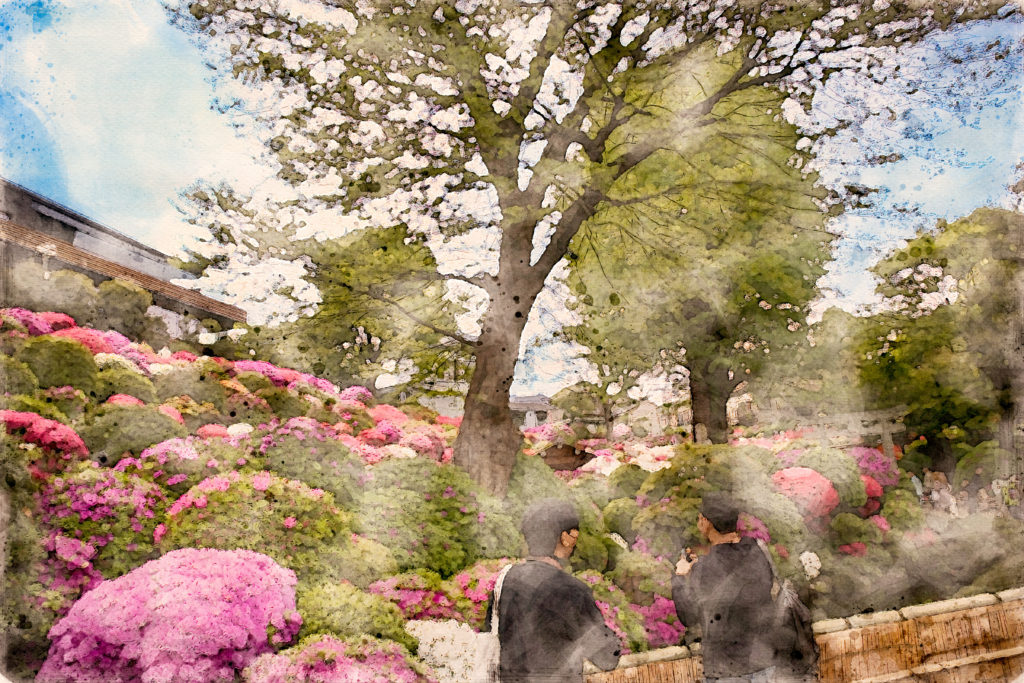
Here’s some information about the Bunkyo Azalea Festival in 2023:
- Dates: From Saturday, April 1st to Sunday, April 30th
- Hours: Open from 9:30 am to 5:30 pm
- Admission: Costs 300 yen to enter the garden
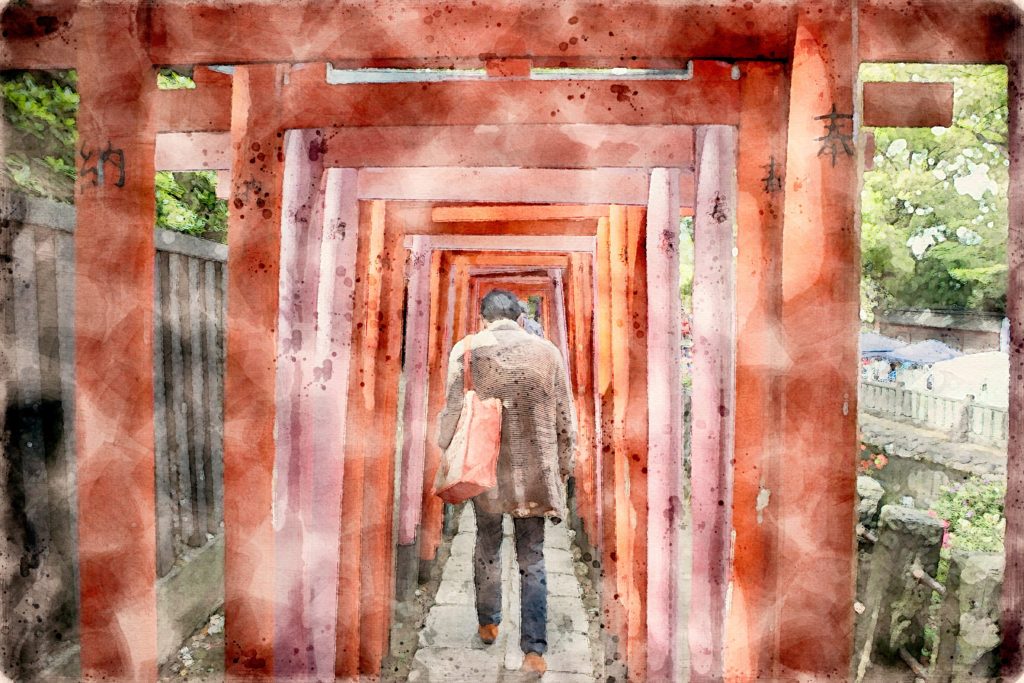
I really like the Senbon Torii (thousand torii gates) at Nezu Shrine, but it was very crowded during the Bunkyo Azalea Festival. I couldn’t walk through the torii gates at my own pace, which made me feel quite disappointed.
Pasa
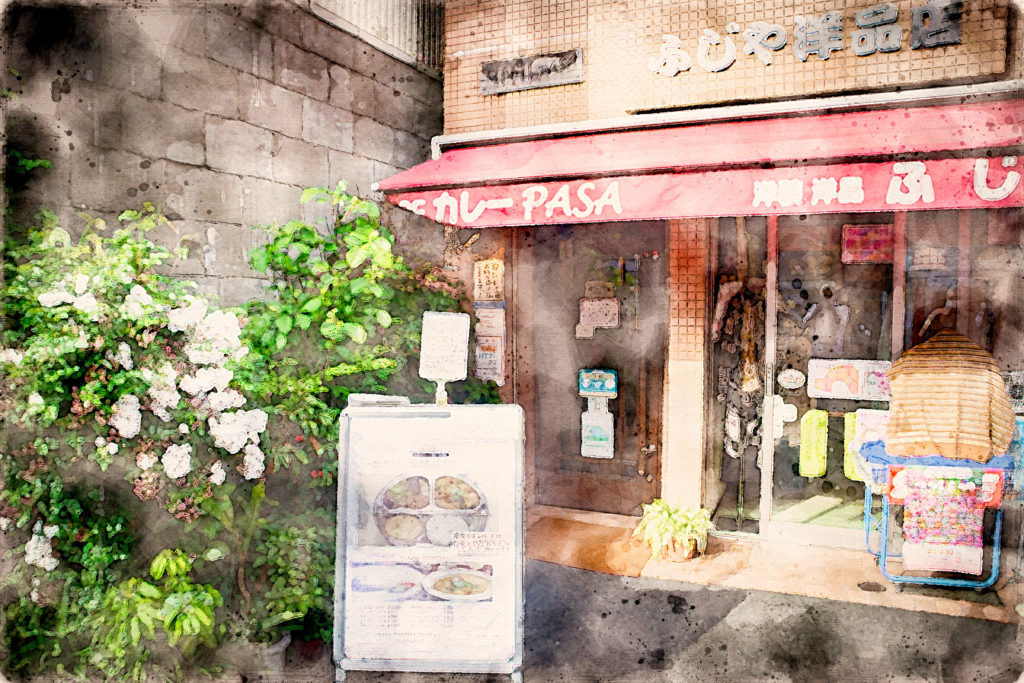
After we finished our visit to Nezu Shrine, we decided to have a late lunch at Pasa, a restaurant that specializes in Nepali home cuisine and curry.
The restaurant is conveniently located just one minute away from the Nezu-Jinja-Iriguchi Intersection on Shinobazu-Dori Avenue, towards Nezu Station.
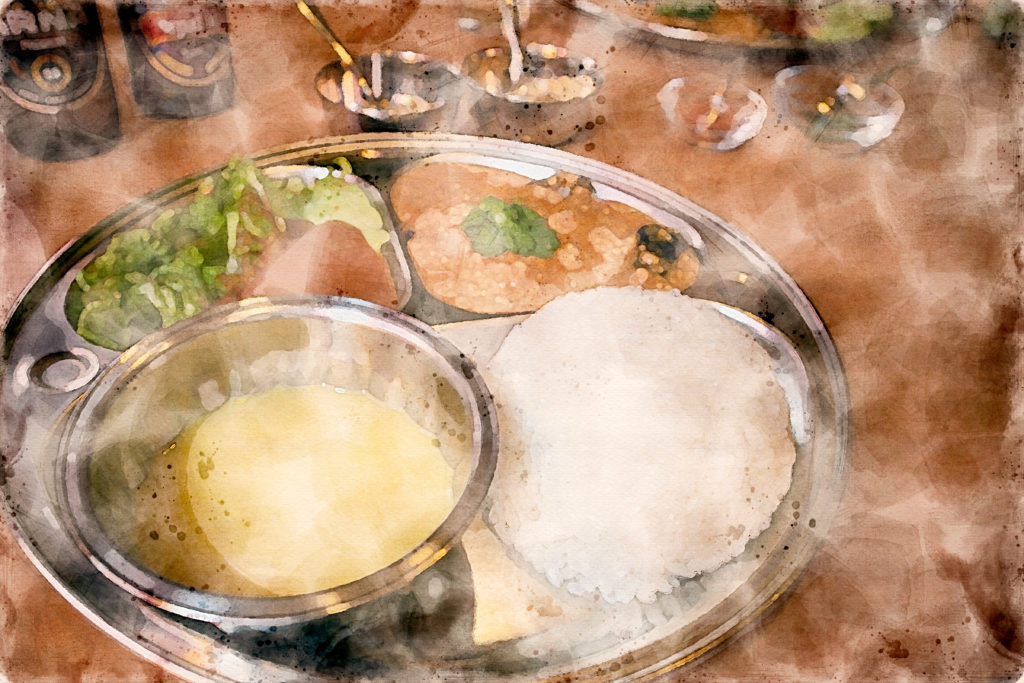
On this occasion, we ordered the Daily Lunch Special #1, which was a Nepalese curry set meal for 1,100 yen. Additionally, we also ordered some Nepalese beer.
Although I’m not familiar with Nepalese food, I quickly realized that the food at Pasa was really delicious. If you enjoy Indian cuisine, you will definitely appreciate Pasa’s food too.
The staff at Pasa are very friendly and provide excellent customer service, making it a comfortable place to enjoy your meal.
Nezu-Eki-Mae Stop on the Megurin East-West Route (Route #16-1)
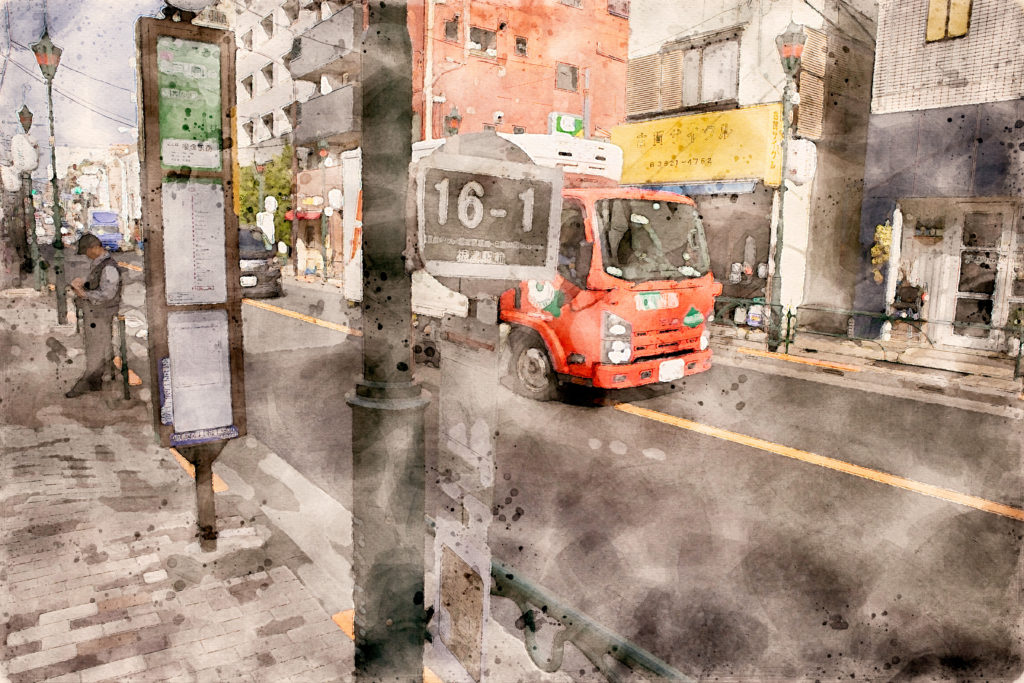
After having lunch at Pasa, we traveled back to Asakusa by taking the Megurin Bus. We boarded the Megurin East-West Route (via Uguisudani Station) at the Nezu-Eki-Mae Stop (Stop #16-1).
This bus stop is located near the Nezu 1-Chome intersection. To get there from Pasa, walk along Shinobazu-Dori Avenue towards Nezu Station. Take a left turn at the intersection with Akafuda-Do, the supermarket, and you will reach the bus stop shortly.
Asakusa Station Stop on Megurin East-West Route (Stop #32)
Our last destination for the tour is Asakusa Station, which takes approximately 35 minutes from the Nezu-Eki-Mae Stop on the Megurin East-West Route.
During the journey, the bus will pass through several notable places, including:
- Ueno Station on the Keisei Line (near Ameyoko)
- Ueno Station (Iriya Exit) on the JR Line
- Kappabashi Kitchenware Town
- and the Kaminarimon Gate at Sensoji Temple.
Depending on your interests and schedule, you may want to consider getting off the bus at one of these locations.
